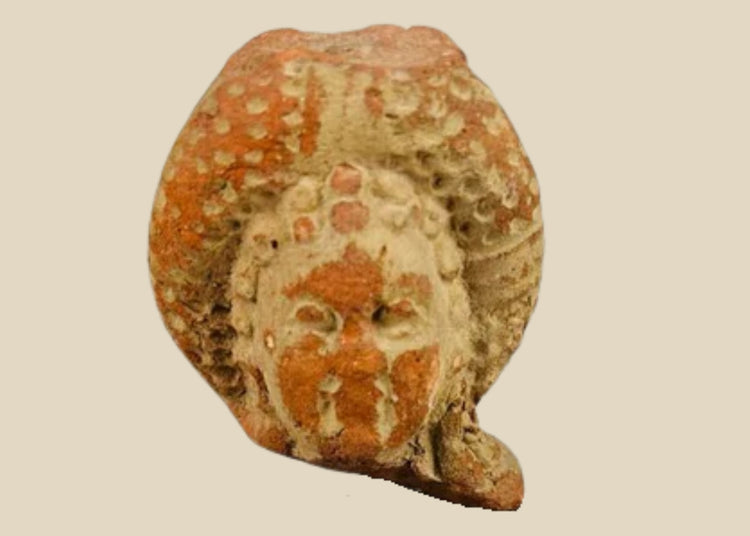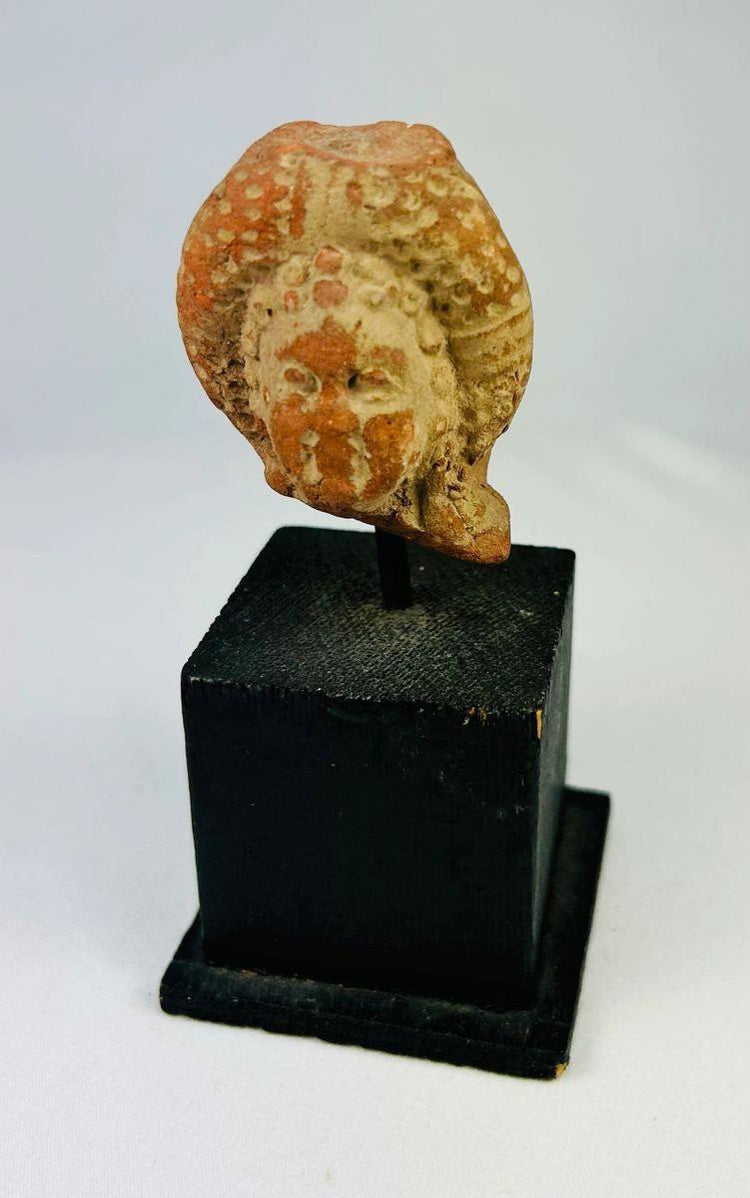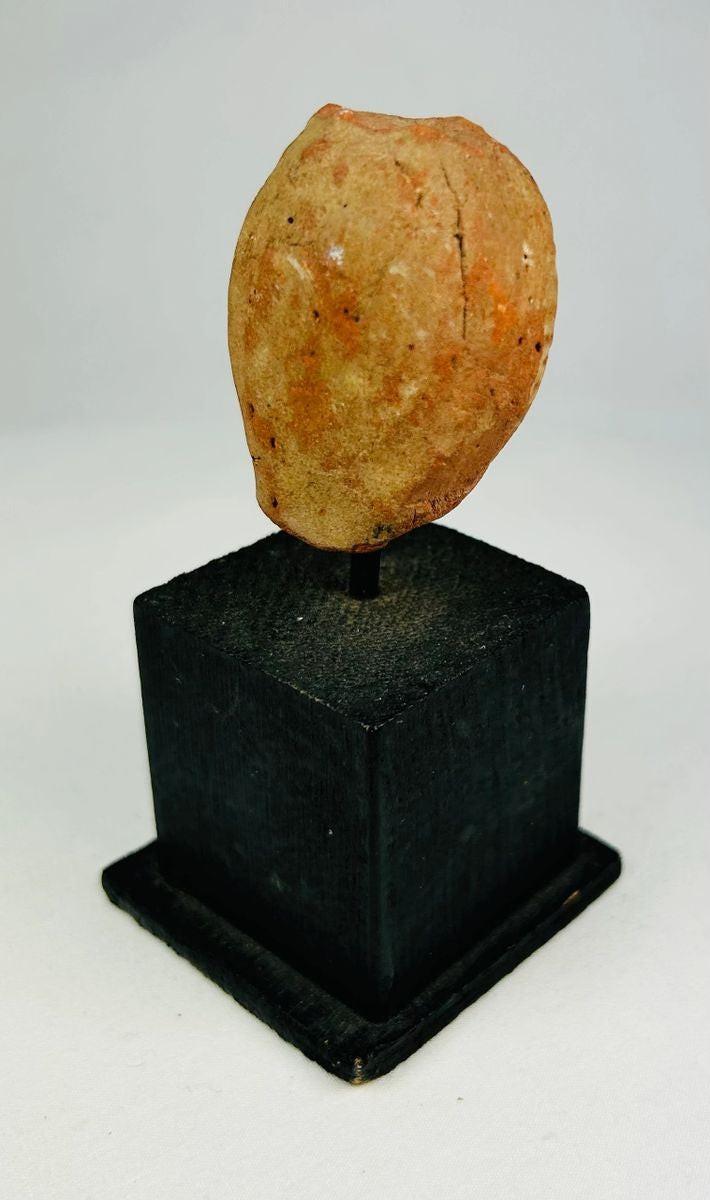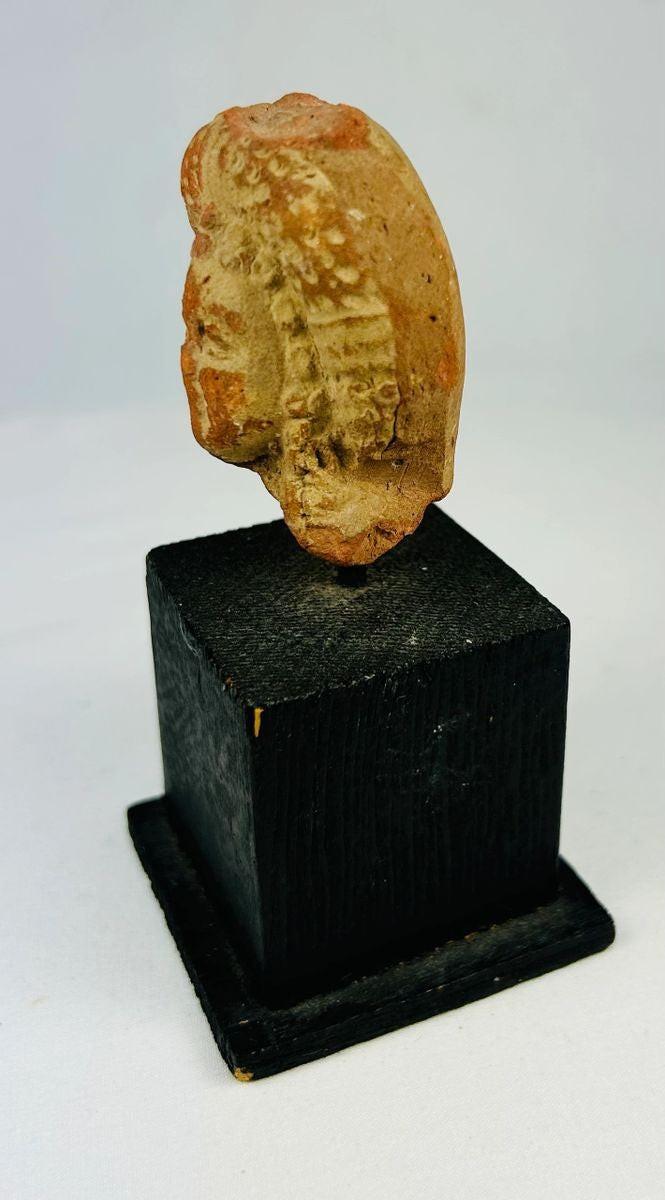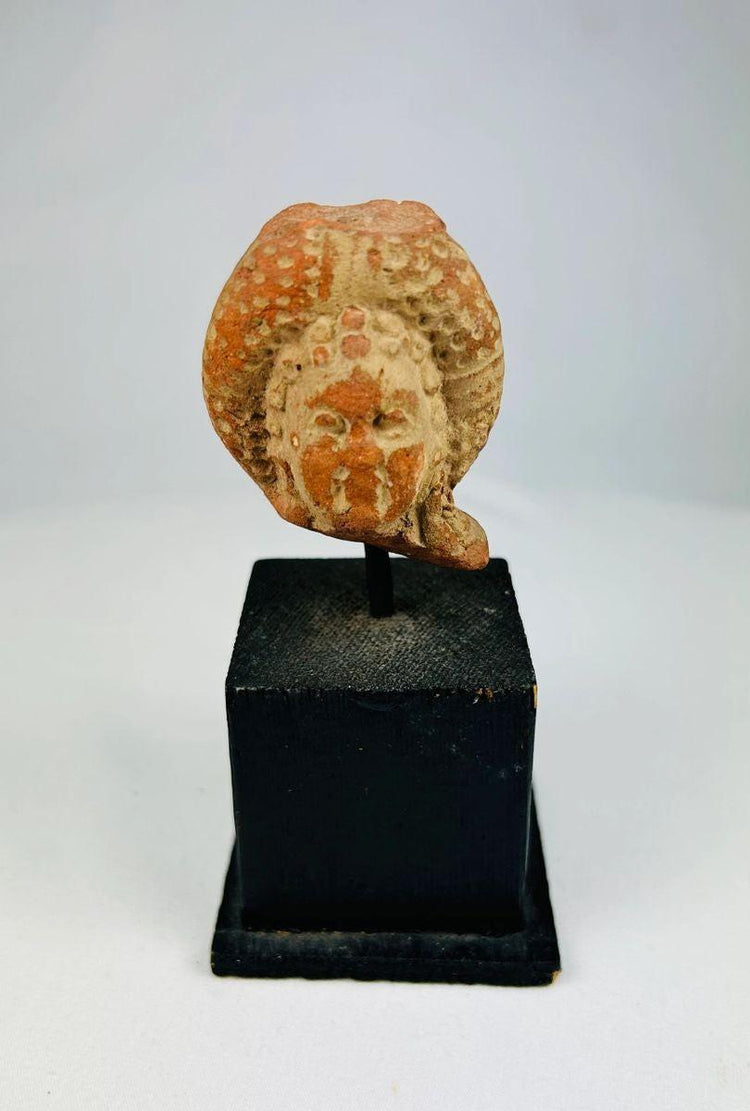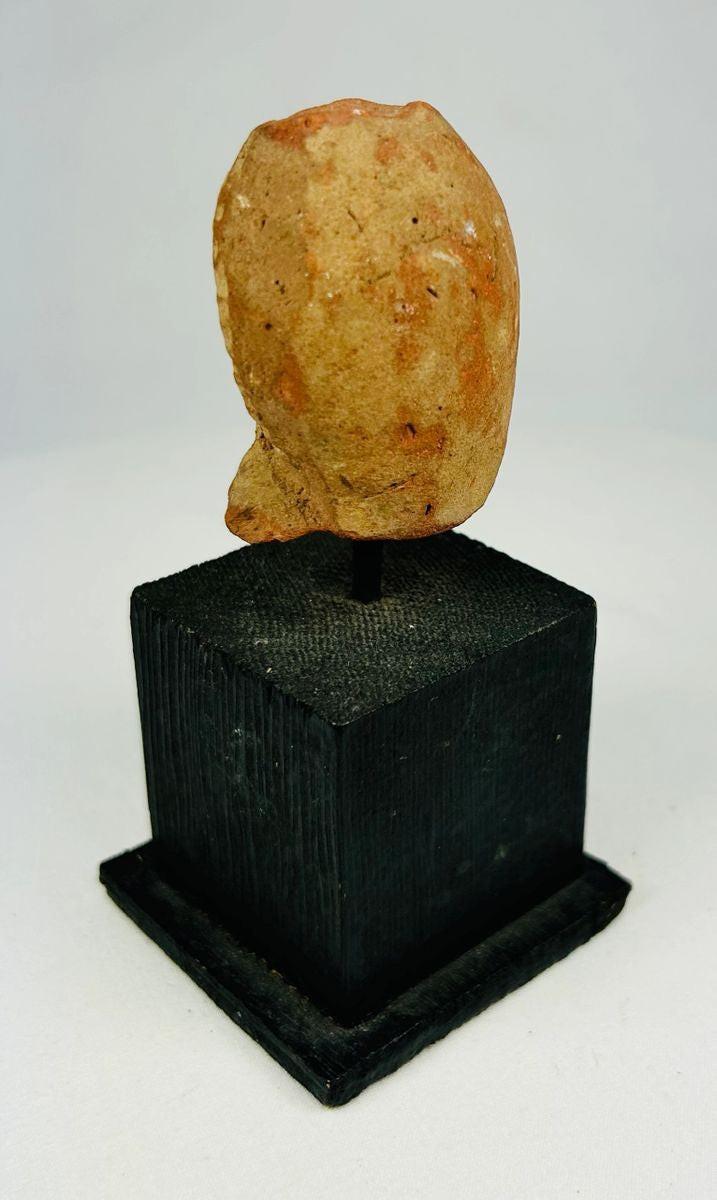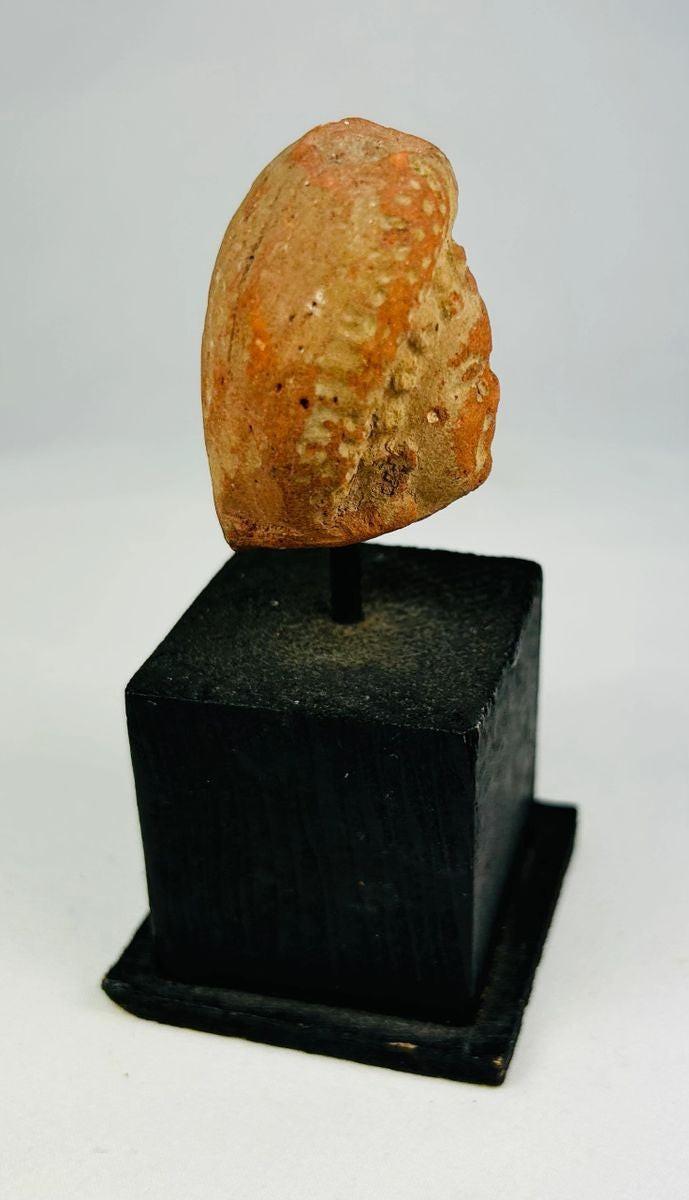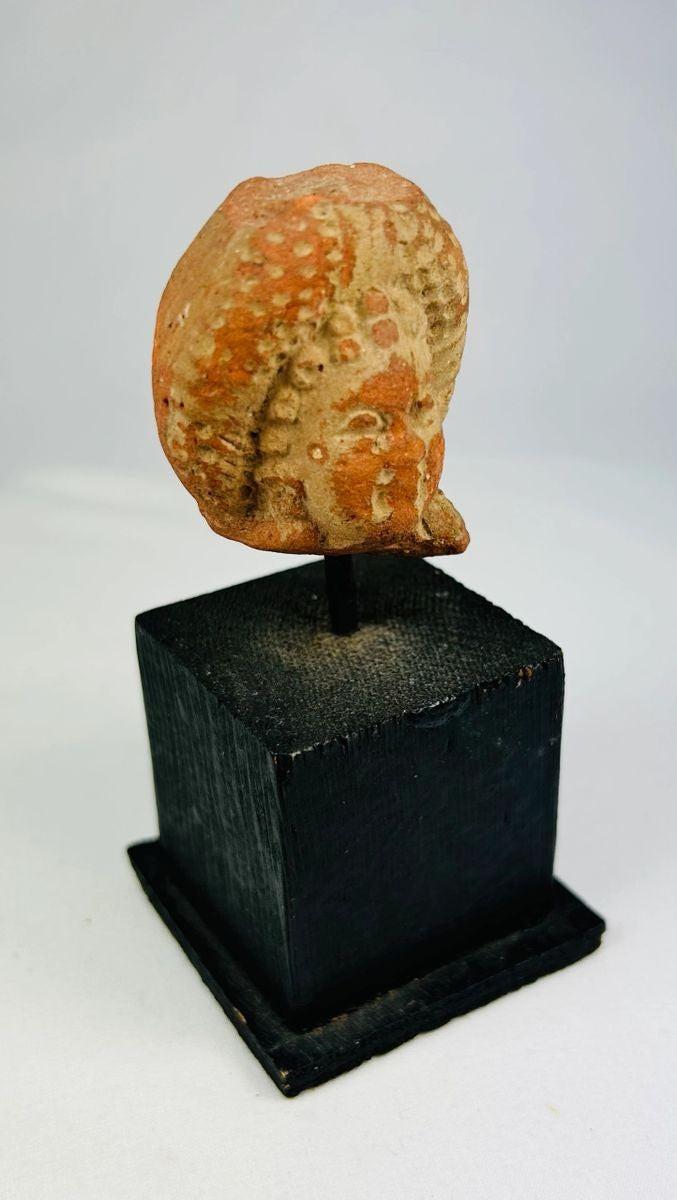Pre-Columbian | Terracotta Head Fragment with Original Pigment Circa 500–1200 CE
Description
More
Less
Historical Context & Origin
Region: Mesoamerica or South America (Maya, Aztec, or related Pre-Columbian cultures)
Material: Terracotta with traces of pigment
Period: 500–1200 CE
Description
This terracotta head fragment represents the artistry and spiritual depth of ancient Pre-Columbian civilizations. Likely once part of a larger figurine or sculpture, it may have depicted a deity, elite individual, or ceremonial figure central to ritual practices. The face displays a serene expression, symbolizing spirituality and divine presence, while the intricate headdress suggests ceremonial or cultural importance. Traces of red and white pigment remain, testifying to the vibrant polychromy that once animated the figure, a practice common across Pre-Columbian societies to imbue objects with life and power.
Features
- Finely modeled facial features with a calm, spiritual expression
- Intricately carved headdress or hairpiece denoting ceremonial or elite status
- Remnants of red and white pigment, indicating original painted surface
- Crafted from durable terracotta, widely used in ritual and domestic art
- Likely part of a larger figurine used in ceremonial or devotional contexts
Cultural Significance
Such terracotta figures were deeply tied to the religious and cultural practices of Pre-Columbian societies. They were commonly used in rituals, offerings, or as representations of divine and ancestral beings. The serene expression suggests spiritual intent, while the craftsmanship reflects the high level of artistry in these civilizations. The fragmentary state does not diminish its impact but rather enhances its role as a window into the artistic and ceremonial traditions of the Maya, Aztec, or related cultures.
Condition
The fragment exhibits natural age-related wear and a rich earthen patina that confirms its authenticity. While incomplete, the preserved details of the facial features, headdress, and traces of pigment offer an evocative glimpse into the artifact’s original form. Minor surface chips and erosion are consistent with its great age.
Dimensions (approximate)
Height: 4 in
Age
800–1,500 years old
Description
Historical Context & Origin
Region: Mesoamerica or South America (Maya, Aztec, or related Pre-Columbian cultures)
Material: Terracotta with traces of pigment
Period: 500–1200 CE
Description
This terracotta head fragment represents the artistry and spiritual depth of ancient Pre-Columbian civilizations. Likely once part of a larger figurine or sculpture, it may have depicted a deity, elite individual, or ceremonial figure central to ritual practices. The face displays a serene expression, symbolizing spirituality and divine presence, while the intricate headdress suggests ceremonial or cultural importance. Traces of red and white pigment remain, testifying to the vibrant polychromy that once animated the figure, a practice common across Pre-Columbian societies to imbue objects with life and power.
Features
- Finely modeled facial features with a calm, spiritual expression
- Intricately carved headdress or hairpiece denoting ceremonial or elite status
- Remnants of red and white pigment, indicating original painted surface
- Crafted from durable terracotta, widely used in ritual and domestic art
- Likely part of a larger figurine used in ceremonial or devotional contexts
Cultural Significance
Such terracotta figures were deeply tied to the religious and cultural practices of Pre-Columbian societies. They were commonly used in rituals, offerings, or as representations of divine and ancestral beings. The serene expression suggests spiritual intent, while the craftsmanship reflects the high level of artistry in these civilizations. The fragmentary state does not diminish its impact but rather enhances its role as a window into the artistic and ceremonial traditions of the Maya, Aztec, or related cultures.
Condition
The fragment exhibits natural age-related wear and a rich earthen patina that confirms its authenticity. While incomplete, the preserved details of the facial features, headdress, and traces of pigment offer an evocative glimpse into the artifact’s original form. Minor surface chips and erosion are consistent with its great age.
Dimensions (approximate)
Height: 4 in
Age
800–1,500 years old
You May Also Like






















